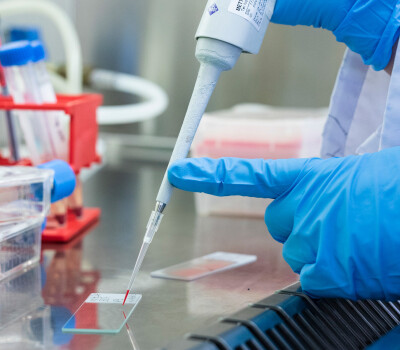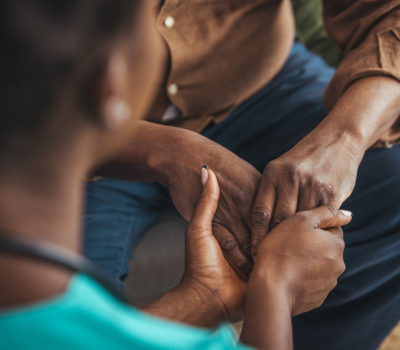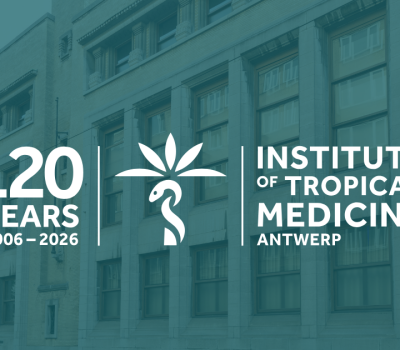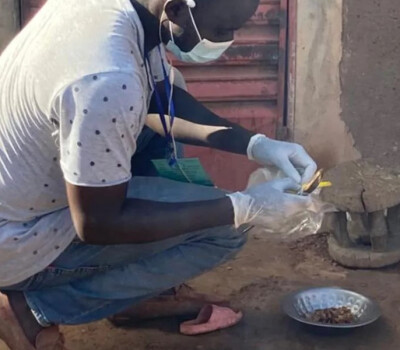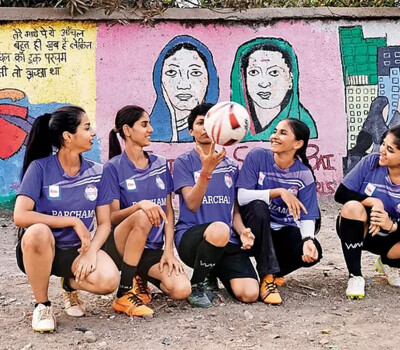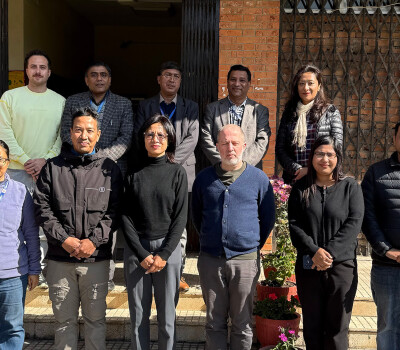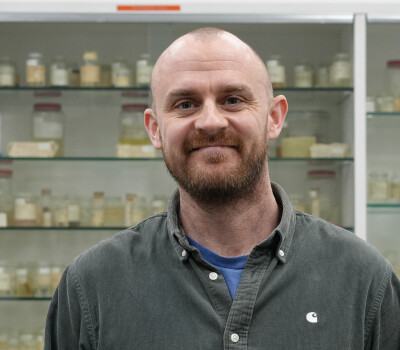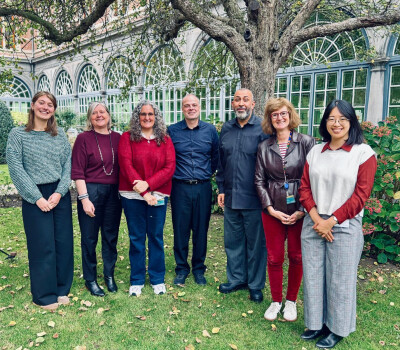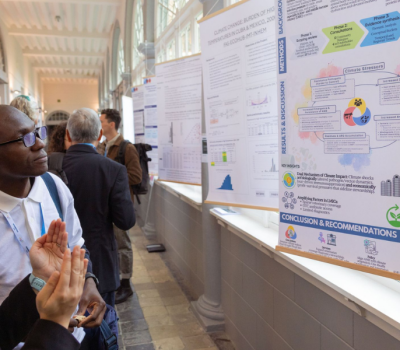Fresh Off The Journal: September 2025

Publication highlights: September 2025
Every year, our ITM researchers, together with their partners, publish around 380 articles in high-impact journals. Each month, we highlight a selection of these publications.
Department of Biomedical Sciences
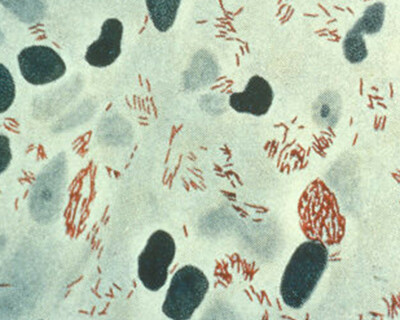
A taste of diagnosis? Tongue dorsum samplings for leprosy
Can the tongue help diagnose leprosy? Researchers from our Unit of Mycobacteriology explored this question in the Comoros, swabbing nearly 500 patients’ tongues. They found Mycobacterium leprae DNA in about 18% of tongue swabs and 13% of tongue scrapes, mainly in those with advanced disease. While skin biopsies and nasal swabs remain more reliable, the study opens new paths to understand how the leprosy bacterium spreads through the body and possibly between people.
Krausser, L., Van Nieuwenhove, M., Attoumane, N., Grillone, S. H., Van Dyck-Lippens, M., Rigouts, L., Baco, A., Abdou, W., Mzembaba, A., Hasker, E., Assoumani, Y., De Jong, B. C., & Braet, S. M. (2025). Exploration of tongue dorsum sampling to support clinical diagnosis of leprosy patients in the Comoros: A cross-sectional study. PLoS Neglected Tropical Diseases, 19(9), e0013541.
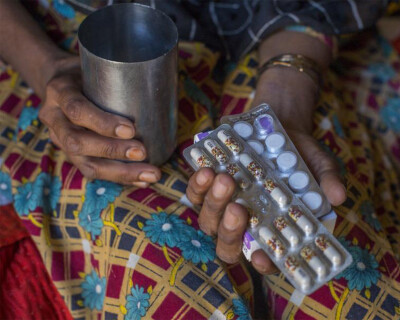
No shortcuts: testing a new TB regimen
Can tough-to-treat tuberculosis be cured with a shorter, all-oral regimen? The international endTB-Q trial tested a 6–9 month combination of bedaquiline, delamanid, linezolid, and clofazimine against the standard WHO-recommended treatment for drug-resistant TB. Results showed the shorter regimen was not as effective, with similar side effects. The findings suggest that patients with highly resistant TB may still need longer, reinforced treatments.
Guglielmetti, L., Khan, U., Velásquez, G. E., Gouillou, M., Ali, M. H., Amjad, S., Kamal, F., Abubakirov, A., Ardizzoni, E., Baudin, E., Bektassov, S., Berry, C., Bonnet, M., Chavan, V., Coutisson, S., Dakenova, Z., De Jong, B. C., Van Dinh, L., Ferlazzo, G., . . . Mitnick, C. D. (2025). Bedaquiline, delamanid, linezolid, and clofazimine for rifampicin-resistant and fluoroquinolone-resistant tuberculosis (endTB-Q): an open-label, multicentre, stratified, non-inferiority, randomised, controlled, phase 3 trial. PubMed.
(c) image: Asim Hafeez, Médecins Sans Frontières (MSF)
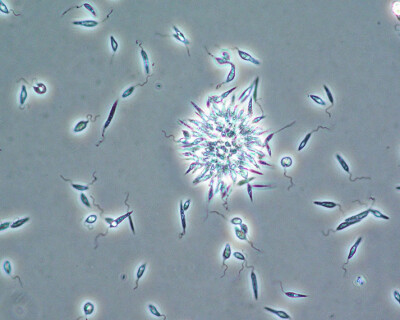
Leishmania’s local secrets uncovered
Researchers from our Unit of Experimental Parasitology studied how Leishmania tropica spreads in Morocco among people with cutaneous leishmaniasis. By sequencing parasite genome directly from skin samples, they revealed a micro-focal transmission among humans, underlain by (pseudo-)clonal and sexual reproduction of the parasites. The study shows how direct genome sequencing can uncover fine-scale transmission patterns, offering new insights into parasite evolution and spread.
Daoui, O., Monsieurs, P., Talimi, H., Späth, G. F., Dujardin, JC., Heeren, S., Lemrani, M., & Domagalska, M. A. (2025). Genome Sequencing of Leishmania tropica in Tissues of Moroccan Patients Reveals Microfocal Transmission Underlain by (Pseudo)Clonal and Sexual Reproduction. The Journal Of Infectious Diseases.
Department of Public Health
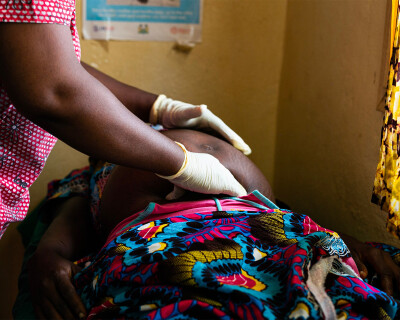
Rethinking caesarean use for stillborn deliveries in Africa
A multi-country study across Benin, Malawi, Uganda and Tanzania found that caesarean sections are often performed even when babies are stillborn, 41% in intrapartum and 19% in antepartum cases. Lack of information on fetal heartbeat at admission was linked to higher caesarean rates, likely reflecting uncertainty in care decisions. The findings highlight the urgent need for better fetal monitoring tools and clearer guidelines in low-resource settings.
Del Rosario Alsina, M., Benova, L., Kandeya, B., Abeid, M., Agossou, C., Orsini, N., Chipeta, E., Kidanto, H., Pembe, A. B., Dossou, J., Waiswa, P., Christou, A., & Hanson, C. (2025). Caesarean section for stillborn babies, Benin, Malawi, Uganda and United Republic of Tanzania. Bulletin Of The World Health Organization, 103(9), 550–562.

Mapping gaps in maternity care in Benin
In Benin’s Grand Nokoué region, ITM researchers mapped how quickly women can reach childbirth services. While most women live within 30 minutes of a facility, access to hospitals can take over 100 minutes at slow travel speeds. The poorest women face five times longer journeys than the wealthiest. The study shows that improving care for peri-urban and disadvantaged groups is key to reducing inequalities in maternal health.
Hounménou, Y. S. C., Avahoundjè, E. M., Semaan, A., Agossou, C. M., Hounsou, C. B., Agbodjavou, M. K., Scarpa, G., Dossou, A. D., Lawale, T. O., Bothon, R., Denakpo, J. L., Beňová, L., Dossou, J., & Macharia, P. M. (2025). Modeling Geographical Accessibility and Inequalities to Childbirth Services in the Grand Nokoué Metropolitan Area, Benin. Journal Of Urban Health.
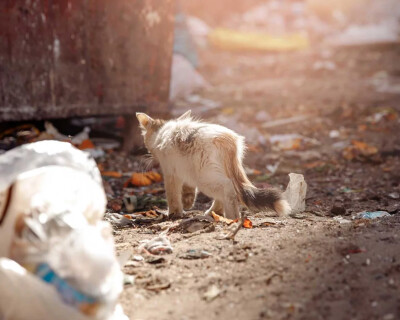
The hidden toll of toxoplasmosis in Burundi
For the first time, researchers from ITM, Ghent University and the University of Burundi estimated the burden of congenital toxoplasmosis in Burundi. In 2020, about 1,180 children were born with the infection, causing a health loss of over 7,000 DALYs and costing $550,000. The study underscores toxoplasmosis as a major but overlooked public health issue. A One Health approach, including better food safety, hygiene, cat management, and screening of pregnant women, will be crucial to reduce this burden.
Minani, S., Di Bari, C., Devleesschauwer, B., Gasogo, A., Ntirandekura, J., Gabriël, S., & Trevisan, C. (2025a). Assessing the burden of congenital toxoplasmosis in Burundi, 2020. Acta Tropica, 107828.
Department of Clinical Sciences
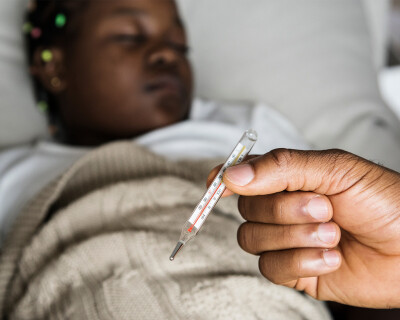
Hidden infections? Bartonella and Q fever in febrile patients
In Sudan, Nepal, and Cambodia, our researchers tested over 1,300 patients with persistent fever for two overlooked bacteria: Coxiella burnetii (Q fever) and Bartonella. Around 4–5% showed antibodies, with Bartonella most common in Nepal. The findings raise questions about cross-reactivity, past exposure, or hidden co-infections. The study highlights the challenges of accurate diagnosis in low-resource settings and the need for better-tailored diagnostic tools.
Boodman, C., Edouard, S., Van Griensven, J., Koirala, K. D., Khanal, B., Rijal, S., Bhattarai, N. R., Safi, S. E., Phe, T., Lim, K., Lutumba, P., Chappuis, F., Yansouni, C. P., Tsoumanis, A., Barbé, B., Van Esbroeck, M., Verdonck, K., Boelaert, M., Gupta, N., . . . Bottieau, E. (2025). Coxiella burnetii and Bartonella species serology of febrile patients with an established infectious or inflammatory diagnosis in Sudan, Nepal, and Cambodia. Microbiology Spectrum.
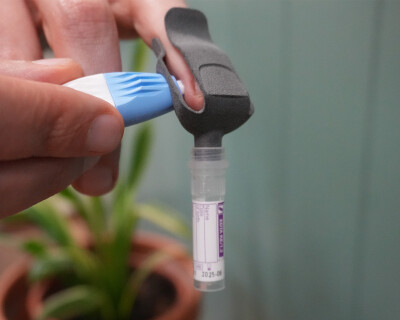
Making blood sampling simple
Getting enough blood from a simple fingerprick is harder than it sounds. Our researchers developed the Collect2Know (C2K) device to make self-sampling more reliable and user-friendly. Through five design rounds, the final prototype allowed over 75% of participants to collect sufficient blood, with high usability scores. The device could decentralize routine blood sampling, improving access to diagnostics in both high- and low-resource settings.
Herrijgers, C., Van Landeghem, E., Vanroye, F., Cuylaerts, V., Kenyon, C., Vanbaelen, T., Van Lent, K., Smekens, B., Decuypere, S., Bosman, E., De Cock, N., Couwenbergh, C., Baert, E., Wymeersch, R., Sorgeloos, K., Beyers, K., Dierickx, T., Van Den Bossche, D., Platteau, T., & De Baetselier, I. (2025). The development of a novel device to aid in capillary macro blood self-sampling via an iterative study design. Expert Review Of Medical Devices.
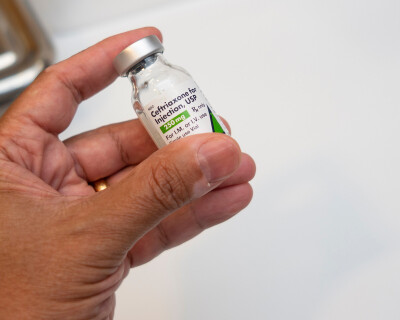
When gonorrhea won’t go away
What if gonorrhea keeps coming back despite correct treatment? ITM researchers report a rare case where a patient suffered eight episodes of treatment failure with ceftriaxone, even though the bacteria were not resistant. Instead, the culprit was bacterial tolerance, a survival strategy where microbes “play dead” during treatment. The infection was finally cleared with prolonged therapy. The study highlights tolerance as an overlooked cause of treatment failure.
Kanesaka, I., Vanbaelen, T., De Baetselier, I., Van Den Bossche, D., Abdellati, S., De Block, T., Manoharan-Basil, S. S., & Kenyon, C. (2025). Could tolerance explain an individual’s eight episodes of gonococcal treatment failure with ceftriaxone? A case report. Sexually Transmitted Infections.
Spread the word! Share this story on
